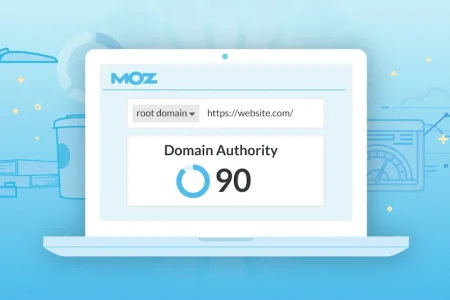In today’s digital age, social media has become a powerful tool for e-commerce growth, offering Canadian businesses a unique opportunity to connect with customers, drive sales, and build brand loyalty. Whether you’re running a small local shop or a growing online store, mastering social commerce can significantly boost your e-commerce success. In this article, we’ll explore how Canadian small to medium-sized businesses (SMBs) can effectively leverage social media for e-commerce growth, including practical steps and real-world examples.
Understanding Social Commerce
Social commerce is the integration of social media platforms with e-commerce functionality, allowing customers to discover, browse, and purchase products directly within their favorite social apps. Platforms like Facebook, Instagram, Pinterest, and TikTok have introduced features such as shoppable posts, product tags, and in-app checkout options that simplify the shopping experience for users.
Why It Matters: In Canada, social media usage is incredibly high, with over 33 million active users as of 2024. This widespread adoption makes social commerce an essential strategy for reaching potential customers where they already spend a significant amount of their time.
How to Leverage Social Media for E-Commerce Growth
1. Choose the Right Platforms
Not all social media platforms are created equal, and the best one for your business depends on your target audience and product type.
- Instagram: Ideal for visual products like fashion, beauty, and home decor. Instagram’s Shopping feature allows you to create a customizable storefront and tag products in your posts and stories, making it easy for users to shop directly from your feed.
- Facebook: With its broad demographic, Facebook is great for reaching a wide audience. Its Marketplace and Shops features let businesses list products directly on their page, while targeted ads can drive traffic to your e-commerce site.
- Pinterest: A haven for inspiration and discovery, Pinterest is perfect for businesses in the fashion, DIY, and home improvement sectors. Promoted pins can drive significant traffic to your e-commerce site, while product pins enable direct purchases.
- TikTok: Rapidly growing in popularity, TikTok is especially effective for reaching younger audiences. With TikTok Shopping, you can integrate your products directly into short, engaging videos, making them instantly shoppable.
Example: A Canadian SMB specializing in handmade jewelry might focus on Instagram and Pinterest to showcase their products through high-quality images and videos. By tagging products in Instagram posts and creating shoppable pins on Pinterest, they make it easy for customers to purchase directly from social media.
2. Optimize Your Social Media Profiles
Your social media profile is often the first point of contact between your brand and potential customers. Ensuring that your profile is optimized for e-commerce can make a big difference in converting visitors into buyers.
- Complete Your Profile: Include all relevant information such as your business name, contact details, website link, and a brief description of what you offer. Make sure your profile picture is professional and consistent with your brand image.
- Use Call-to-Actions (CTAs): Encourage users to take action by including CTAs like “Shop Now,” “Visit Our Store,” or “Check Out Our Latest Products” in your bio and posts.
- Link to Your Online Store: Make sure there’s a direct link to your e-commerce website or online shop within your profile. On platforms like Instagram, use tools like Linktree to include multiple links if needed.
Example: A small Canadian fashion brand could optimize their Instagram profile by adding a “Shop Now” button, linking to their latest collection in their bio, and regularly updating their story highlights with new arrivals and promotions.
3. Create Engaging Content
Content is king on social media, and the more engaging and relevant your content is, the more likely it is to attract and retain customers.
- Visual Appeal: High-quality images and videos are crucial, especially for products that are visually driven. Use consistent branding, color schemes, and filters to create a cohesive look.
- User-Generated Content (UGC): Encourage your customers to share photos and reviews of your products. Reposting UGC not only fills your feed with authentic content but also builds community and trust around your brand.
- Behind-the-Scenes: Show the process behind your products or introduce the team. This humanizes your brand and can create a deeper connection with your audience.
- Interactive Content: Polls, quizzes, and Q&A sessions are great for engaging your audience. They not only boost interaction but also provide valuable insights into your customers’ preferences.
Example: A Canadian artisanal coffee brand might post behind-the-scenes videos of their roasting process, share customer photos enjoying their coffee, and use Instagram Stories to run polls on new flavor ideas.
4. Utilize Shoppable Posts and Stories
One of the most powerful features of social commerce is the ability to create shoppable posts and stories. These allow users to make purchases directly from their social media feeds without leaving the app.
- Tag Your Products: On platforms like Instagram and Facebook, you can tag products in your posts and stories, allowing users to click on the tag and purchase the product directly.
- Use Product Stickers: On Instagram Stories, you can use product stickers to feature specific items, making them easily shoppable for your followers.
- Highlight Promotions: Use shoppable posts to highlight sales, new arrivals, or limited-time offers. Pair these with strong CTAs to encourage immediate action.
Example: A Canadian cosmetics brand could use Instagram Stories to showcase a new product line, tagging each item with product stickers to allow followers to shop instantly. They might also create a dedicated highlight reel for easy access to these products.
5. Leverage Influencer Marketing
Influencer marketing continues to be a powerful strategy for reaching new audiences and driving sales on social media. By partnering with influencers who align with your brand, you can tap into their follower base and gain credibility.
- Choose the Right Influencers: Look for influencers who have a strong following within your target demographic and whose values align with your brand. Micro-influencers (those with smaller but highly engaged audiences) can be particularly effective for SMBs.
- Create Authentic Partnerships: Work with influencers to create content that feels natural and authentic. Whether it’s a product review, an unboxing video, or a giveaway, the content should resonate with the influencer’s audience while highlighting your products.
- Track Performance: Use analytics tools to measure the success of your influencer campaigns. Track metrics like engagement rates, click-through rates, and conversions to assess ROI.
Example: A small Canadian skincare brand might collaborate with a local beauty influencer to create a series of Instagram posts and stories showcasing their products. The influencer’s followers are likely to trust their recommendations, leading to increased brand visibility and sales.
6. Implement Social Media Advertising
While organic reach on social media is valuable, paid social media advertising can significantly amplify your reach and drive more targeted traffic to your e-commerce site.
- Targeted Ads: Social media platforms offer advanced targeting options, allowing you to reach specific demographics, interests, and behaviors. This ensures your ads are seen by the people most likely to be interested in your products.
- Retargeting: Use retargeting ads to reach users who have previously visited your website or engaged with your social media content. These ads can remind them of products they viewed or offer incentives to complete their purchase.
- A/B Testing: Experiment with different ad creatives, copy, and formats to see what resonates best with your audience. Continuously optimize your campaigns based on performance data.
Example: A Canadian online bookshop could run Facebook and Instagram ads targeting book lovers based on their interests and past purchase behavior. They might also use retargeting ads to reach users who added books to their cart but didn’t complete the purchase.
Conclusion: The Future of Social Commerce for Canadian SMBs
Social media has evolved far beyond a tool for brand awareness—it’s now a vital platform for driving e-commerce growth. For Canadian SMBs, leveraging social commerce means not only staying competitive but also opening up new avenues for customer engagement and sales.
By choosing the right platforms, optimizing your profiles, creating engaging content, and utilizing shoppable posts, influencer marketing, and social media advertising, you can turn your social media presence into a powerful sales engine. As social commerce continues to grow, those who adapt and innovate will be well-positioned to lead in the digital marketplace.






